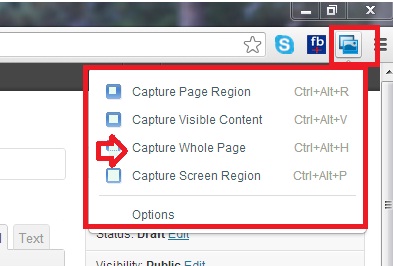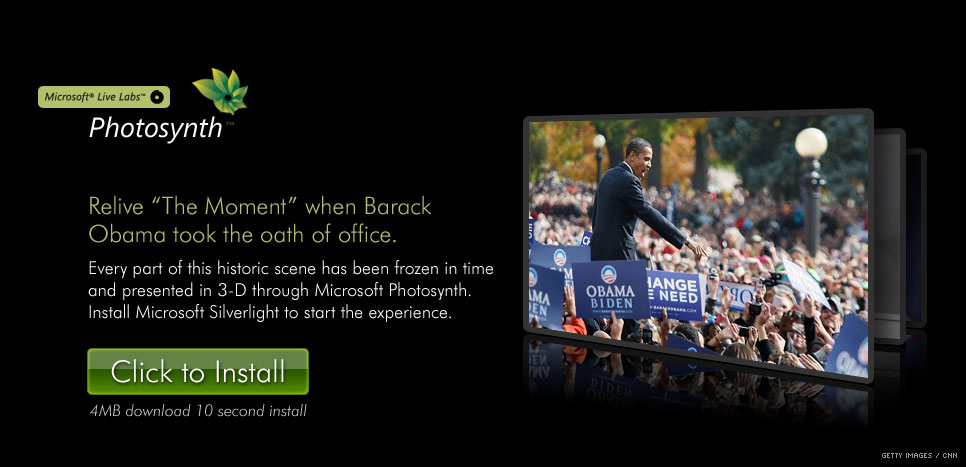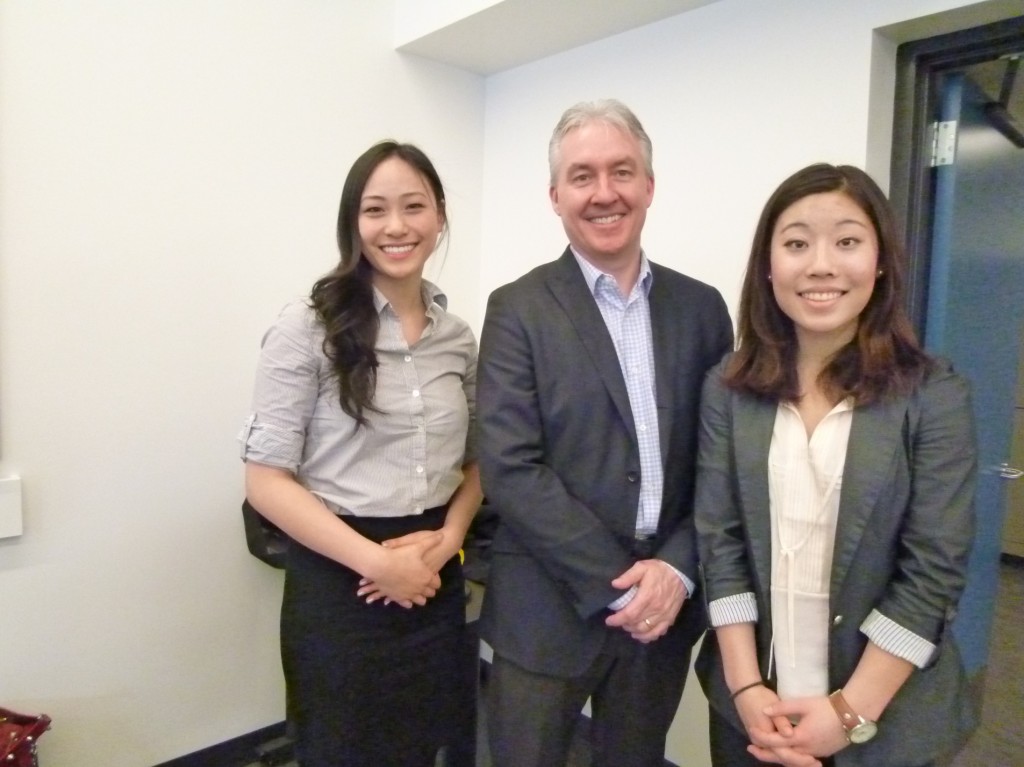Completed for my COMM 365 Market Research class. Spent about 3 days putting this together from research to design (in PowerPoint of all programs). While it isn’t perfect yet, I thought it would be neat to share! Here’s my two cents on the online dating industry.
Category: Technology
Uncover the Chrome potential – have you tried these Chrome extensions yet? I’ve round up some of the top productivity and time-saving extensions I’ve used or want to try (in no particular order):

1. StayFocusd
I’ve reviewed this extension before, but it has made it to my list. So what is this extension? StayFocusd restricts the time you can spend on certain websites, thereby increasing “productivity by limiting the amount of time that you can spend on time-wasting websites.” This proves to be useful during exam periods when you need to cut down the time you spend on Youtube, Facebook, Pinterest, or even email. If you want to cheat on the minutes you get after you run out, it takes many annoying clicks through tons of buttons before you’re allowed to make changes.

“Capture visible content of a tab, a region of a web page, or the whole page as a PNG image.” Great for materials you want to keep from websites to insert into PowerPoint presentations or reference materials for your papers. It has saved me so much time versus print screening and stitching together photos in Paint.
3. Pocket
When you see a useful page but don’t have time to read it all, hit the “Pocket” button to save the page and view it later. “It automatically syncs to your phone, tablet or computer so you can view it at any time, even without an internet connection.” It’s kind of like a Pinterest for websites, except it’s for your personal use.
4. LucidChart
For my friends in BTM, TLog, or engineering, I’m sure you’ll have to do a lot of flow charting. Google Drive apps are kind of annoying to create diagrams, as you need to create a drawing and add shapes. LucidChart is “the easiest way to draw flowcharts, mockups, UML, mind maps and more. Work together in real time with your team and clients.”
I’ve looked for things like this forever. If you’re in need of a virtual meeting, perhaps give this a try to “discuss design, brainstorm, work on projects, make mindmaps and use it in education.” Only downside (?) is that everyone will have to install it. Similar ones include: Conceptboard, TeamBox, Orchestra and more.
Bonus: BucketListly
This app just sounds like a blast. “Bucketlistly will turn your life into a game. Complete and share your ‘achievement unlocked’ moments with your friends fast and simple.”This has more to do with productivity outside of work or school life, but it is a motivating way to keep track of all the things you want to do. We all get a sense of satisfaction from ticking off a box.
What is your favourite app or extension? Leave a comment below 🙂
On a crazy new hunt to find a new personal laptop, I have been roaming the tech forums. According Computex reports, the trend this year is a series of hybrid, multi-purpose Windows 8 laptops that boast of their light weight, long battery life, and high processing power. I personally believe that, with the rise of Windows 8, the trend for computers in the future will move towards not just touch screen now, but towards “All-In-One” – screens not restricted to phone/tablet/laptop that allow multiple inputs (fingers, palms, pens) by multiple users at a time, allowing more use for the laptop. The new Microsoft Office was an upgrade long overdue, and it will be the perfect finishing touch.
1. ASUS Taichi

I first saw this laptop on Tech2’s post. After some intense Googling, I came across Engadget’s photos and reviews of the beast.
- Two screens (one of which is a touchscreen), both LED backlit, IPS panels with Full HD resolution
- tablet when notebook is closed, but apparently Asus claims you can use both screens at the same time
- lightweight, offered in 11.6-inch and 13.3-inch
- Intel’s 3rd Generation Ivy Bridge CPUs
- matte silver and black interior, backlit keyboard
- SSD
2. Samsung Series 5 and 7 Hybrid PC

I have personally never been a fan of any Korean electronic product for their constant poor quality and short life span, but I’m trying to be hopeful about this hybrid PC for its pen integration. Crossing my fingers that it will not be laggy. This is supposed to be a Transformer-style tablet PC with a S-Pen (yes, like the ones from Galaxy Note).

So this doesn’t officially count as a tablet PC, but its amazing specs and functionality have rendered it onto my consideration list. The difference with this compared to other tablets, regardless of Android or iOS, is that besides Windows RTS, it will also offer Windows 8 Pro, which means that it should have capabilities comparable to a laptop. With a quad core and up to 128GB of internal storage, it should be an extremely amazing student companion device. It is set to release October 26, 2012.

What astounds me is ASUS’s ability to dual boot Android and Windows 8 on a tablet. Surprisingly, this device is neither laptop nor tablet; it is a giant 18.4 inch desktop.

A beautiful, sexy and sleek laptop that duals as a tablet! Good thing they offer it in 13.3 inch models, as tablets are usually 10-some-odd inches. Not many specs have been released about this laptop yet, but it looks very promising. However, as ultrabooks as this usually use SSD, I am gauging prices to be expensive even for 128 GB. Still better than 32GB on a tablet though!
That’s it for now. I’m sure there will be more as the time goes on, but I am very excited to see how this trend progresses. Perhaps I’ll make an update entry!
“I remember Lego sets back in the day. There was a time when they did not come with a manual. ” – Eric Gales
Windows has been my technological companion from humongous gray blocks to paper thin laptops. I joined the Windows Campus Rep Program in November 2011, and was sent out to Toronto for training at Microsoft Headquarters with the other UBC Campus Reps. You can find me sitting cheerfully at the PC section (yes, it’s there and it coexists peacefully next to the Macs) in the UBC Bookstore.
On April 3rd, I was lucky enough to be a part of the Microsoft Round Table Discussion with Microsoft Canada President, Eric Gales, and Associate Dean Murali Chandrashekaran from the Sauder School of Business at UBC. Eric was such a pleasure to listen to, and even more engaging to talk to. The event was even published on the front page of the Business Section in the Vancouver Sun!
In the discussion, the three topics of discussion were:
• What students need to be doing to set themselves up for success in the workforce
• Why students need to be more risk-tolerant and curious in order to establish and build career success
• How students can leverage technology to be more innovative, efficient and productive than the competition
I found that the main takeaways from the discussion, however, were of a slightly different focus. If I could summarize the talk in a nutshell, I would say the three main points were rather:
• What is innovation?
• What are entrepreneurs?
• How can students find innovation and help society?
What is innovation?
What is innovation? Innovation isn’t all about “designing that new break-through product” or “making the next, crazy do-all portable device.” Eric defines innovation as: “Doing something in a new way.” Continuing on this concept, Social Innovation BC defines it in their discussion paper about social entrepeneurship as “seeing things differently and imagining that which could be. It is about asking questions of ourselves and our institutions and wondering whether we can do better.”
Innovation is looking at a mug and seeing a coathanger. Innovation is making things larger than life. Innovation is making reality into illusion. Innovation is figuring out how two things can fit hand in hand.




What are entrepreneurs?
Entrepreneurs are people who convert ideas into action. They see through risk and put weight into rewards. They know their views, but do not hold a heavy bias so that they can openly disagree with themselves if they see fit. They are business leaders that attract ideas. And most importantly, they are not alone. Innovation is all about a cumulative; language exists for a reason, and that is for humanity to record, communicate, share and combine these ideas into a collective pool of information, and entrepreneurs think of ways to mold something out of them.
Business leaders: idea attraction: how to capture, cultivate and action: capture system? come from people closest to action
How can students find innovation and help society?
The problem in Canada, specifically, was identified in the discussion to be a large productivity gap and slower rates of adoption in technology in Canada. The reasons mentioned were perhaps the lack of competition, having all the tools for execution but not actually executing, an ineffective capture system for innovative ideas… the list goes on. To foster an innovative environment, we can start from university. We don’t really have issues with generating ideas, but more of what to do once you have one.

As an aspiring entrepreneur, the discussion really inspired me to stop being afraid of taking that first step or of making mistakes, because the biggest difference between people who dream big and people who breathe life into their big dreams is action. Eric commented that it is a “dog eat dog world,” but that should not be discouraging as long as you come into the world prepared. Be prepared to believe that there is a better way, as he put it. Be prepared to be wrong, but have the inner confidence to challenge yourself. Be prepared to invest your thoughts in the benefits for motivation, instead of fearing the risks.
We’re young, and it’s a good time to make mistakes. Bill Gates one said, “At Microsoft there are lots of brilliant ideas but the image is that they all come from the top — I’m afraid that’s not quite right.” There will be many people with more years (and experience) than you, but you have the advantage of coming from the source, closest to action. I am discovering so many wonderful opportunities in Sauder alone in terms of clubs, events, workshops and courses, and from what I hear, there will be an additional project-based course in development. Your university is one of the biggest foster homes for innovation, so make use of what’s available to you. It’s time for us to take charge, take risks, and take a chance.
Are you ready to be the change?
Inventor Woody Norris, 2005 winner of the $500,000 Lemelson-MIT Prize
The title of this blog post comes from the tagline of Audio Spotlight by Holosonic, a company specializing in focused audio technology.

So what exactly is this technology? SearchMobileComputing defines directional or isolated sound as “a technology that concentrates acoustic energy into a narrow beam so that it can be projected to a discrete area, much as a spotlight focuses light” akin to the light waves of a laser. It uses ultrasonic sound, a high frequency and focused wave, to carry sound information that manifests after it hits any solid object, recreating the original audio so it is audible to the human ear. It is almost as if the sound is “being created right at your ears.” Then, “if you step out of the beam, the waves have nothing to distort and mix them, so the inaudible ultrasonic waves slide silently past.”
I’ll leave it to physics-inclined experts to describe how the invention works in detail (click here to learn more about how it works) as I go on to talk about the major applications of this technology.
As a marketing tool:
- shopping malls – paired with either motion sensors or proximity detectors, various advertisements could target and attract customers on a more personal level. Wal-Mart has been looking into the technology, and as seen in the Youtube video below, stores have already implemented directional sound.
- pair with geotagging – to tie things back to my previous blog post, there is a huge opportunity for directional audio to work together with geotagging technologies to create highly innovative and interactive marketing campaigns

As an informational tool:
- guidance – if someone gets lost, they could follow voice instructions that can guide them to their destination without affecting the people around them. A realistic application would be at crosswalks to help blind people.
- museum or exhibit explanations – perhaps the audience wants to know more about a piece of art or a poster. They can then stand in front of the poster to learn more about what they’re looking at.
- This Johnnie Walker exhibit in the Miami International airport uses Audio Spotlight to create a unique interactive experience (August 2011).

As entertainment:
- music – now people can share the same space but enjoy different music without affecting one another. Concert performers can target different areas in the audience for a new type of interaction.
- art – will we see new art forms emerging? An art piece could be simultaneously visual and audio.
- amusement parks – Disney. Need I say more?
As a weapon:
- subduing criminals – emit a high frequency sound to inflict pain among suspects.
- noise cancellation – for fighter jets, noisy engines or loud machinery.
- tricking enemies – fake the direction of attack.
As seen, this technology could have infinite applications. However, keeping in mind that this technology is not new at all (2002), why hasn’t it become mainstream yet? My guess is that a lot of development is needed to ensure quality and control, not to mention considering how to mitigate complaints in violations of privacy.
The evolution of web mapping technology has been extraordinary.
Google Maps was one of the very first online web mapping technologies. Created in early 2005, it now dominates in online and mobile web-mapping technology. The power of Google Maps is probably with its route-planning and route-calculating elements that allow anyone with wireless access or even on the go with a smartphone to be have a directional guide. Shortly after Google Maps, Google Earth came along with its incorporation of incredible satellite images, and eventually Bing Maps in 2010.
What makes Bing Maps superb is the use of Microsoft’s Seadragon technology, which allows seamless zooming regardless of resolution or file size that is optimized for online browsing. With this kind of technology, Bing Map users can zoom in with their mouse wheels from a satellite or map view to a point where it automatically transitions into street view, all with little load time. To understand what DeepZoom (based off of Seadragon) looks like in action, check out this amazing demonstration: Hard Rock Memorabilia. Fascinating as that was, don’t drop your jaw yet! Just when you think you’ve seen it all, Microsoft Live Labs releases Photosynth, a software to create 3D views of a particular location that can then be uploaded to Bing Maps.

Photosynth allows for an “augmented-reality mapping technology.” Photos taken by the public can be integrated into the map itself to create a virtual reality with infinite zooming, viewing angles, and even time frames, integrating cartography with imagery, as the developer of Bing Maps, Blaise Aguera y Arcas, puts it. It can even be used in real time, as Blaise showcases in his ground-breaking TED Talk.

And that brings us to the topic of geotagging. Geotagging is the process of linking locations to photos by embedding an extra piece of information (longitude and latitude) into the photo. Eye-Fi is an example service-provider for geotagging and uses the Wi-Fi Positioning System (WPS) to do so. It has now even been integrated into newer technologies such as the HTC Flyer and Huawei MediaPad. After witnessing Photosynth and Seadragon, one can imagine its unlimited applications with the addition of geotagging, especially in terms of promotions and advertising. However, with great power comes great responsibilities… and great threats. Mythbuster host Adam Savage was a victim of geotagging when he accidentally tweeted a geotagged photo and revealed where he lived.
So this new technology – amazing technological advancement and advertising tool or stalking made easy?
“Tubifi (Tübe-ê-fy) verb. To democratize the creation of world-class video at a 1/10th of the price and a fraction of the time.”
Launched just 4 days ago, Tubifi has been a primary topic of discussion amongst various tech and social media blogs. So what is Tubifi, exactly, what do they do, and how does it work?
Tubifi, developed by John Belchers, Harbaldeep Singh, and Micha Barnum, is essentially a powerful online tool to create high quality video ads. They position themselves as the prime inexpensive solution, targeting small and medium-sized businesses with tight budgets (basically with limited money, time, and talent).
What they do is offer a database filled with stock audio and visual materials as well as media directly downloadable from content providers. The website can also monitor the video performance (even by the second) as well as the number of times the link is shared through social media. Tubifi stresses that social media and mobile technology are booming and can end up sucking dry the promotional budget. Thus, Tubifi’s USP is simply that it’s insanely inexpensive and fast.
The following video was created through Tubifi for Alpha Five, an app development and security business for the web and mobile devices in the software industry.

“World-class advertising comes at a price. A very low one.”
Tubifi estimates the costs of traditional advertisement to be nearly $300,000 over the span of however long it would take to shoot at the various locations and create CGI. By using its online tools, Alpha Five was able to produce this at $15,000 within 3 days. They are able to do this because Tubifi minimizes production costs with pre-existing footage.
I’ll definitely be keeping a lookout for firms using this innovative online tool for future advertising!
A world with no Facebook? A world with no Youtube? A world… with no internet?
We already know about censorship in China and North Korea. According to most recent updates, the Egyptian government apparently has cut off all internet in response to the public protesting. (Try it out here: http://www.sis.gov.eg/) How did they do it? In essence, by forcing the nation’s service providers.
It started with Twitter, then Facebook, and eventually the entire internet. They even blocked all text messaging services.

Protests are increasingly getting violent; a curfew was disobeyed, leading to reported deaths (unconfirmed). Molotov’s were thrown, and teargas thrown back. The world is tense in anticipation of Egypt’s new government. Live updates here.
Our lives today are so much dependent on the convenience of the internet – we wake up, check our e-mails, read some news feeds, go to work/school, type up some more documents, waste time on Youtube, update our Facebook status, and repeat. All joking aside, can you even imagine a powerful nation such as the United States cutting off all their internet?

“There’s no way that will happen.” I can already hear the mocking voices of cynics. Such a metaphorical button may, in fact, be in existence. There has been abill proposed in the US, the “Protecting Cyberspace as a National Asset Act,” last year that has been brought back again this year.
—
For future reference, FOTP: Fresh off The Press
New Samsung Technology showcased!
Is AMOLED the new LCD?
This just in, a 4.5-inch WVGA Flexible AMOLED display and a 19-inch qFHD Transparent AMOLED will both be displayed at CES (International Consumer Electronics Show) by Samsung Mobile Display.
FLEXIBLE AMOLED DISPLAY

“Only 2mm thick, the 4.5 inch flexible AMOLED runs at a WVGA 800 x 480 resolution and can be rolled down to a one centimeter radius”
“offers a display resolution four times that of the previous most flexible AMOLED prototype in the industry”
19-INCH TRANSPARENT AMOLED MONITOR

Maybe it isn’t too far-fetched that mankind can witness Avatar-esque technologies…
![]()
Click here for more info on the prototypes.
The Virtual Footware Wall uses LCD touch screens that can give shoe recommendations based on a customer’s gender (facial recognition). The footwear is displayed as a 3D model that can be viewed from any angle, and is accompanied by “videos, game stats, product specs and even twitter feeds.” What a unique and efficient way to showcase shoes that are temporarily out of stock!




